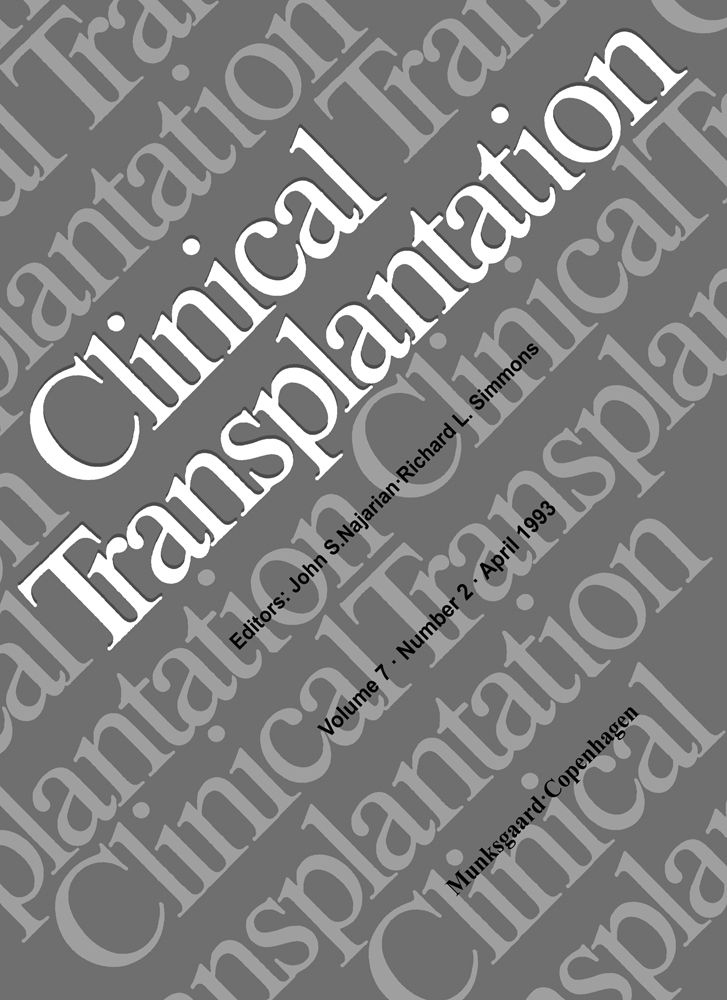Appropriate allocation of pediatric donor kidneys
Abstract
Optimal allocation of pediatric donor kidneys is controversial. We reviewed the outcome of transplanting pediatric donor kidneys into children and adults, together with the outcome of transplanting adult kidneys into adults and children, with the aim of identifying the most appropriate donor-recipient combinations. Three-year graft survival was 73% in 23 adults transplanted with pediatric kidneys, 87% in 23 adults given adult kidneys, 93% in 15 children who received adult kidneys, but only 64% in 11 children who received pediatric kidneys (p <0.05). All single kidneys from donors less than 2.5 years of age failed because of acute rejection early after transplantation. The study does not support the allocation of pediatric kidneys specifically to children and questions the use of single kidneys from very small donors.




